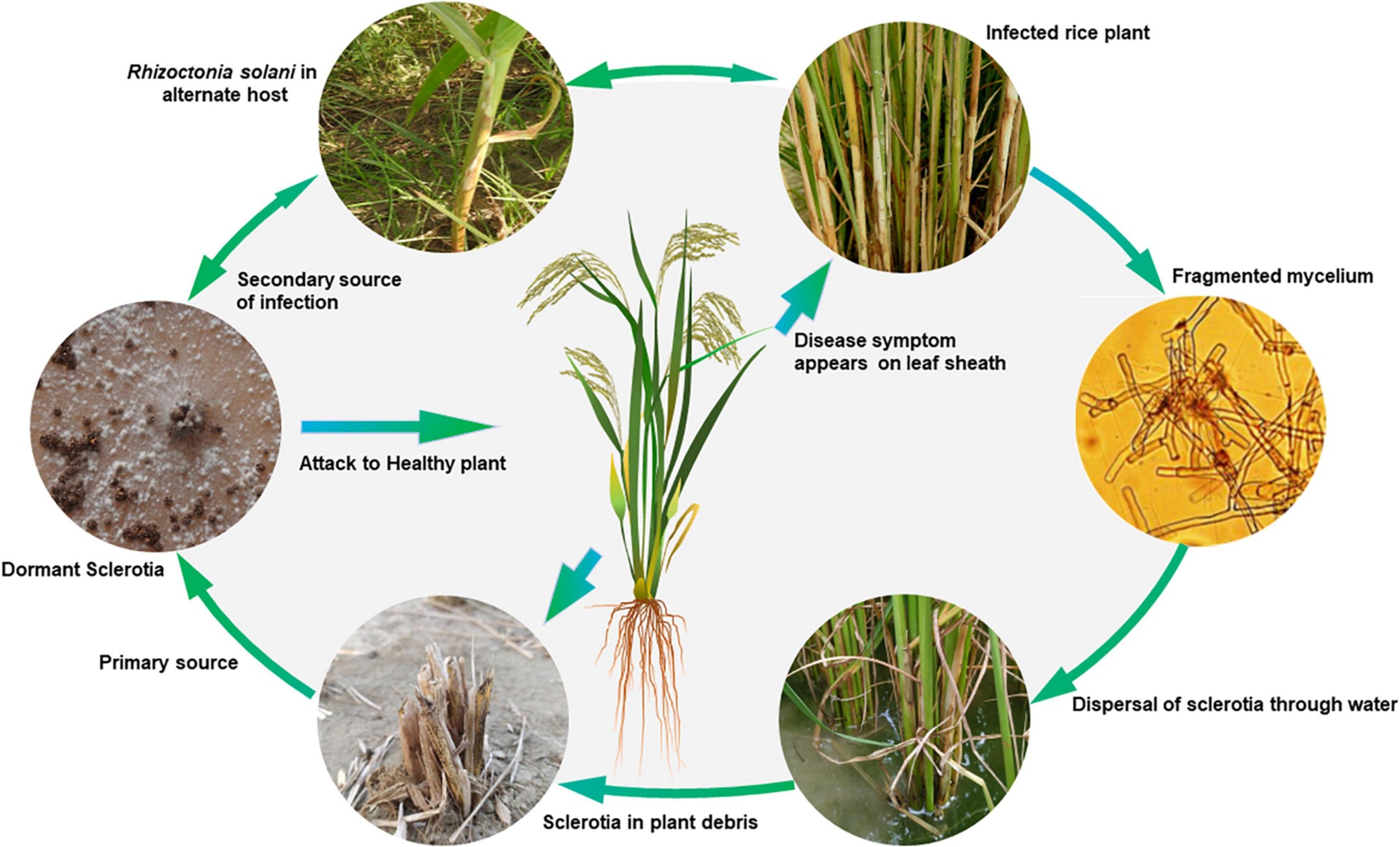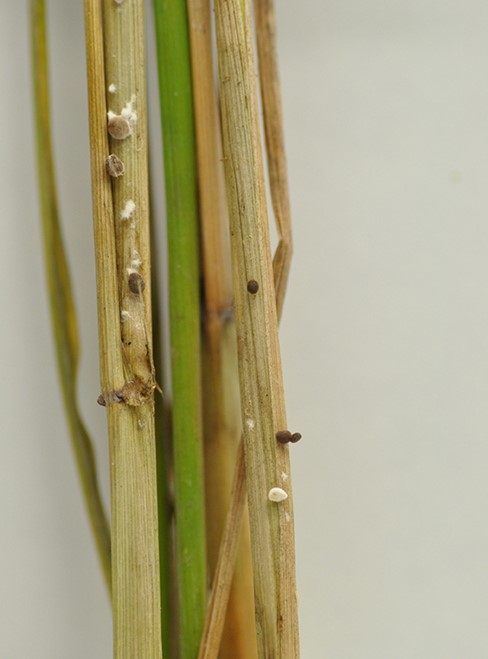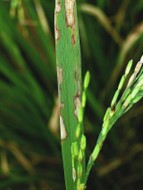Rice sheath blight disease is a fungal disease caused by Rhizoctonia solani and commonly affects plants in the Poaceae family, including rice, wheat, and millet. It is one of the prevalent and economically important diseases of rice in China. Without effective control measures, it can cause grain filling reduction in mild cases and result in rice wilting, lodging, failure to produce panicles, or poor panicle formation in severe cases. Yield losses can exceed 50% in heavily affected fields. Rice is most susceptible to sheath blight during the tillering, jointing, heading, and grain-filling stages. The disease progresses rapidly under field conditions with temperatures ranging from 25 to 32℃and prolonged periods of rainfall.

Life cycle
Symptoms
The infection sites of rice sheath blight disease include the leaves, stem, and neck of the panicle. During the early stages of infection, small indistinct dark green water-soaked lesions appear at the infected sites. These lesions gradually enlarge, forming elliptical or wavy-shaped spots. The central area of the lesion appears grayish-green or gray-brown, while under low humidity, it may become pale yellow or grayish-white. Severe infections result in the merging of multiple lesions, forming large irregular-shaped patches. This often leads to yellowing and withering of leaves, easy breakage of stems, failure to produce panicles, or an increase in unfilled spikelets, resulting in reduced grain weight. In severe cases, the entire panicle may die.



Management measures
Agricultural measures
Avoid excess doses of fertilizers.
Adopt optimum spacing.
Eliminate weed hosts.
Apply organic amendments.
Avoid flow of irrigation water from infected fields to healthy fields.
Deep ploughing in summer and burning of stubbles.
Chemical measures:
The main control method of sheath blight is the use of systemic and nonsystemic fungicides, of systemic are considered more effective. This method produces fewer instances of disease, less inoculum and better yields. One commonly used chemical controls is Azoxystrobin and Defenoconazole , a QOI that prevents the respiration of fungi. KENVOS AXTRA TOP 333, Azoxystrobin +Defenoconazole 333g/L SC, which is very effective against various diseases of rice.